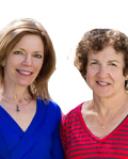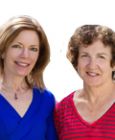Neuroscience
What to Do When Life Is Short
A dying young doctor's answer is surprising and hopeful
Posted April 8, 2015
How do doctors learn to talk about death? Over the years, patients will help them along, and they’ll experience the deaths of their own loved ones. But new doctors needn’t be hamstrung and clueless. In the past year and a half, hundreds of them took the opportunity to learn from their colleague Paul Kalanithi, a young Stanford neurosurgeon who kept up a busy schedule of lectures, research and writing after being diagnosed with stage 4 lung cancer.
Most urgently, he needed to leave a legacy for daughter, born seven months before he died. He knew she likely would have no memory of him. He wanted her to know what her father was about. He intended to write a book. https://www.psychologytoday.com/blog/changing-the-way-we-die/201501/why-writing-matters.
Kalanithi’s writings touched untold thousands of non-medical readers, but he was impassioned about reaching young doctors like himself. Most of them had yet to deal personally with death. And, as he’d experienced, all those hard years of training could lead a person to feel totally in control of life—to believe that making the right choices and working hard will insure a good outcome, if not immortality.
Initially, he was surprised that his writing resonated so widely. A year after writing an opinion piece in the New York Times, http://www.nytimes.com/2014/01/25/opinion/sunday/how-long-have-i-got-left.html?_r=1 he wrote in San Francisco Magazine: “I still get an email nearly every day from someone with heart disease or depression or another medical illness, saying that it helped clarify his or her own situation. The second, and really pleasing, development was the number of doctors who emailed to say that they planned to give the article to their patients or incorporate it into medical school curricula to help students understand the human impact of disease. That was really touching.”
He wrote an essay in Stanford Medicine http://stanmed.stanford.edu/2015spring/before-i-go.html and got letters like this: “Dr. Kalanithi, I could not hold my tears while reading your story. It is a sad story, but at the same time it is an amazing story to share. These are the type of stories that stop us, and make us re-think life and the way that we are living it.”
As top fundraiser, he won the Chris Draft Family Foundation’s Lung Cancer Survivors Super Bowl Challenge, which landed him and family in Arizona for the 2015 Super Bowl.
In his last weeks, Kalanithi worked on a teaching module with the director of Stanford’s palliative care education and training program, Dr. Vyjeyanthi Periyakoil. https://www.psychologytoday.com/blog/changing-the-way-we-die/201406/why-doctors-don-t-want-their-own-medicine-when-they-re-dying
Periyakoil said of Kalanithi: “His ‘dual citizenship’ as a doctor and as a seriously ill patient had taught him that respectful communication is the bedrock of all medicine. We talked about the design of the module and how we could tailor it to make our medical students understand that the so-called soft skills of medicine are the truly hard skills to teach and to learn.”
I got to see Kalanithi twice, for which I will be forever grateful. In the fall, he addressed several hundred Stanford medical students, who sat in rapt attention and then give him a standing ovation. A week later, at another standing-room-only talk about death, best-selling author Atul Gawande spoke about his new book, Being Mortal, in San Francisco. At one point, I scanned the room and saw Kalanithi standing at the back, smiling, with his daughter in a stroller.
He continued to write, blog, tape video http://med.stanford.edu/news/all-news/2015/03/stanford-neurosurgeon-writer-paul-kalanithi-dies-at-37.html and audio interviews. I have no doubt he touched many people, in small and large ways that will live on with others. Is that not exactly what most of us want?
“He opened such an important door to conversation on this part of life,” said colleague of his at Stanford.
To me, the hardest, most impressive was the way Kalanithi was able to intersect with his child's future, knowing he would die soon.
This is a dynamic that’s difficult even when it’s an elderly, very ill person dying, the natural course of life. In our book, Changing the Way We Die, Fran Smith recounts how her father had begun to slide into dementia and physical incapacity just before her daughter was born:
At her first birthday party, she and my father both knocked around with their walkers. He joked, we all did, as if he, like the baby, would soon outgrow the contraption and run free. Over time, I realized they were like two arms of an X, intersecting at a single point as she developed and he declined.
Hard as it is, with the slow, often painful decline that most people now experience, that is the trajectory to hope for: the elderly dying and the young growing up.
Paul Kalanithi had to hope for something else.
Among his last writings is “Before I Go,” in the Spring 2015 issue of Stanford Medicine. http://stanmed.stanford.edu/2015spring/before-i-go.html
It contains a stunning message to his daughter:
When you come to one of the many moments in life when you must give an account of yourself, provide a ledger of what you have been, and done, and meant to the world, do not, I pray, discount that you filled a dying man’s days with a sated joy, a joy unknown to me in all my prior years, a joy that does not hunger for more and more, but rests, satisfied. In this time, right now, that is an enormous thing.
Yet, Kalanithi also saw the humor in his situation:
What tense was I living in? Had I proceeded, like a burned-out Greene character, beyond the present tense and into the past perfect? The future tense seemed vacant and, on others’ lips, jarring. I recently celebrated my 15th college reunion; it seemed rude to respond to parting promises from old friends, “We’ll see you at the 25th!” with “Probably not!”
-- Sheila Himmel




